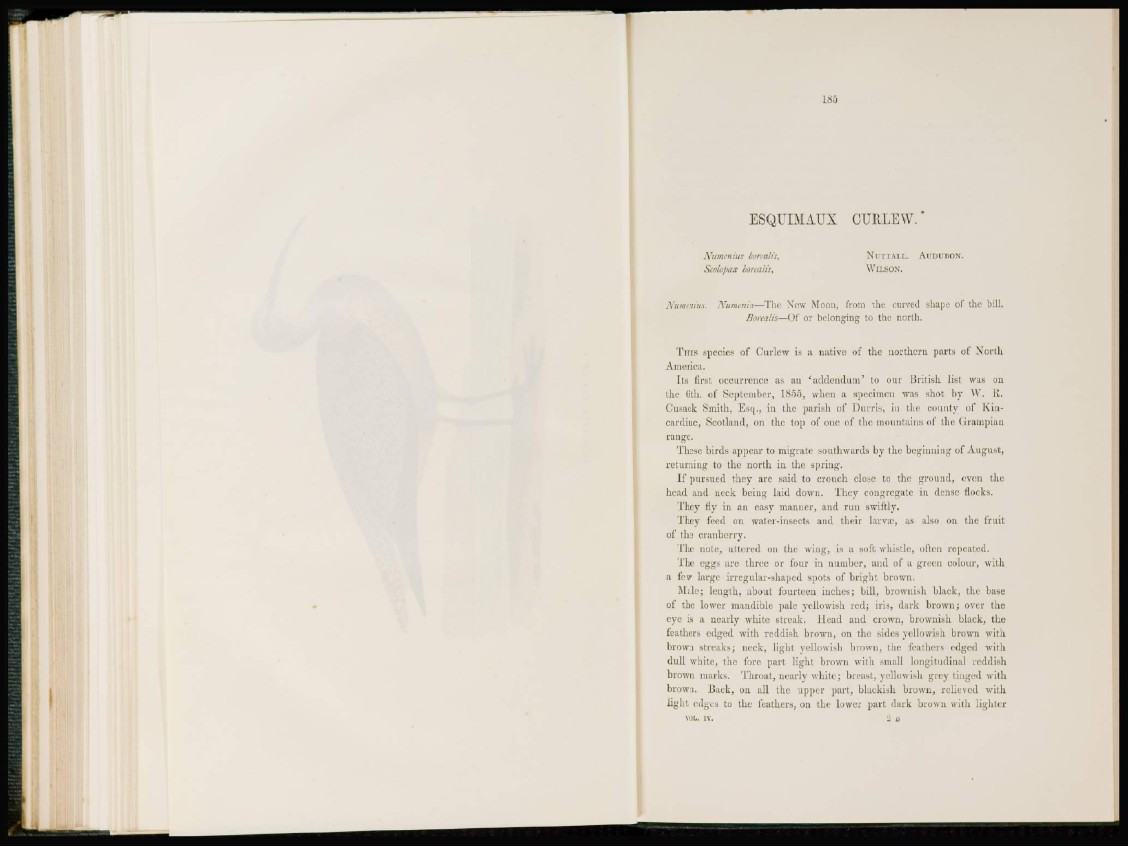
ESQUIMAUX CURLEW. *
Numenius borealis, NUTTALL. AUDUBON.
Scohpax bontalis, WILSON.
Numenius. Numenia—The New Moon, from the curved shape of the bill.
Boreatis—Of or belonging to the north.
THIS species of Curlew is a native of the northern parts of North
America.
Its first occurrence as an 'addendum' to our British list was on
the 6th. of September, 1855, when a specimen was shot by W. R.
Cusaclc Smith, Esq., in the parish of Durris, in the county of Kincardine,
Scotland, on the top of one of the mountains of the Grampian
range.
These birds appear to migrate southwards by the beginning of August,
returning to the north in the spring.
If pursued they are said to crouch close to the ground, even the
head and neck being laid down. They congregate in dense flocks.
They fly in an easy manner, and r un swiftly.
They feed on water-insects and their larva?, as also on the fruit
of the cranberry.
The note, uttered on the wing, is a soft whistle, often repeated.
The eggs are three or four in number, and of a green colour, with
a few large irregular-shaped spots of bright brown.
Male; length, about fourteen inches; bill, brownish black, the base
of the lower mandible pale yellowish red; iris, dark brown; over the
eye is a nearly white streak. Head and crown, brownish black, the
feathers edged with reddish brown, on the sides yellowish brown with
brown streaks; neck, light yellowish brown, the feathers edged with
dull white, the fore part light brown with small longitudinal reddish
brown marks. Throat, nearly white; breast, yellowish grey tinged with
brown. Back, on all the upper part, blackish brown, relieved with
light edges to the feathers, on the lower part dark brown with lighter
VOL. IV. 2 H